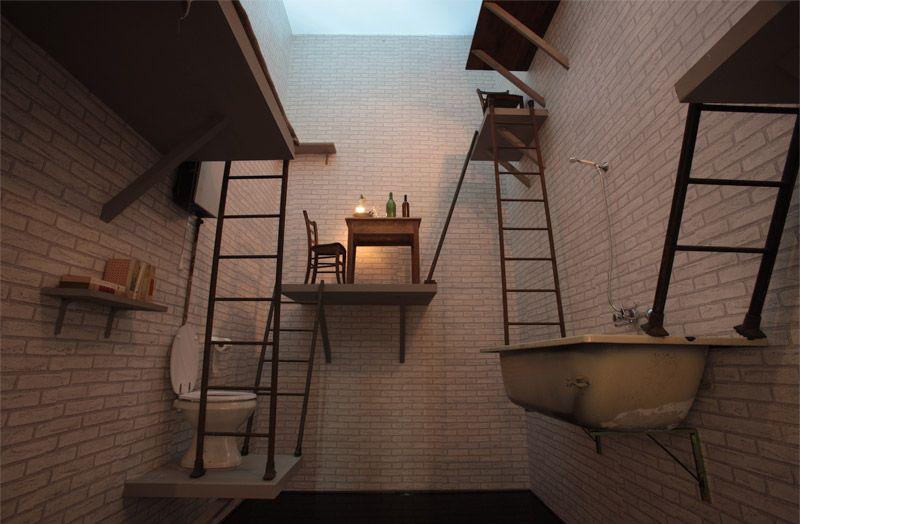Studio Outline
In this studio we will study émigré artists and architects of the 20th century who have made Britain their professional and private home. We will study architects and artists who in the 1930s fled the national socialist regime in Germany and its annexed and occupied territories, bringing with them also radical ideas and concepts about pedagogy, social housing and politics. For many of these young artists and architects the arrival to Britain was initially a promise for of new beginning. However, while the new environment generated a sense of liberation it was also a phase of intellectual uncertainty. We will try to portray the way in which these young émigrés used their knowledge and expertise and how they tried (also failed) to immerse into the cultural and social sphere of their adopted country. Exploring and recording narratives of exile will challenge conventional historiographies of art and architecture. Therefore, new media and presentation formats of archival research, historical mapping, observation, dialogue and intervention have to be applied. In this studio, we will explore these forms of representing history. We will learn about the history of modernism through building visits, walks, studio presentations, discussions, writing exercises and research in libraries and archives.
First seven weeks of study
Week 1: First Day Teaching, Introduction.
Week 2: Lecture.
Week 3: Lecture and reading seminar.
Week 4: Lecture and reading seminar.
Week 5: November - Lecture and reading seminar.
Week 6: November - Lecture and reading seminar.
Week 7: Presentation of Dissertation project.
Contact Tutor Ines Weizman
Reading List
- 1. Shulamith Behr and Marian Malet, Arts in exile in Britain 1933 – 1945: politics and cultural identity, Amsterdam, 2005
- 2. Charlotte Benton, A different world: emigre architects in Britain 1928-1958. London: RIBA Heinz Gallery, 1995
- 3. Nicholas Bullock, Building the Post-War World. Modern architecture and reconstruction in Britain,Routledge, 2002
- 4. Emma Chambers and Karin Orchard (eds.), Schwitters in England, Ostfildern: Hatje Cantz, 2013
- 5. Mark Crinson, Neo-avant-garde und postmodern. Postwar architecture in Britain and beyond, New Haven, Conn: The Yale Center for British Art, 2010
- 6. Dubowitz, Lilly. In Search of a Forgotten Architect: Stefan Sebök 1901-1941.
- 7. Susie Harries, Nikolaus Pevsner. The life, London: Chatto & Windus, 2011
- 8. T.J. Demos, The Exiles of Marcel Duchamp, MIT, 2007
Laszlo Moholy-Nagy, The New Vision: Fundamentals of Bauhaus Design, Painting,sculpture, and Architecture. Mineola, N.Y: Dover, 2005 - 9. Alan Powers, Modern. The modern movement in Britain, London: Merrell, 2005
- 10. Robin Schuldenfrei (ed.), Atomic Dwelling. Anxiety, Domesticity, and Postwar Architecture, London: Routledge, 2012
- 11. Dennis Sharp, Connell, Ward and Lucs. Modern movement architects in England 1929-1939, London: Frances Lincoln, 2008
- 12. Andreas Schatzke, German architects in Great Britain: Planning and Building in Exile 1933-1945, Stuttgart, London: Axel Menges, 2013
- 13. Nigel Warburton, Ernö Goldfinger, The life of an architect, London: Routledge, 2004
- 14. Kathleen James-Chakraborty, Bauhaus Culture: From Weimar to the Cold War., Minneapolis: University of Minnesota Press, 2006
- 15. Gropius, Walter. The New Architecture and the Bauhaus. Cambridge, MA: MIT Press, 1965
- 16. Margret Kentgens-Craig, The Bauhaus and America: First Contacts, 1919-1936. Cambridge, Mass. ; London: MIT Press, 1999
- 17. Rowe, Colin and Robert Slutzky, Transparency. Birkhäuser GmbH, 1997
- 18. Tate Modern (Gallery), Kunsthalle Bielefeld, and Whitney Museum of American Art. Albers and Moholy-Nagy: From the Bauhaus to the New World. London: Tate Publishing, 2006
Myra Warhaftig, Forgotten Architects, London, 2007

